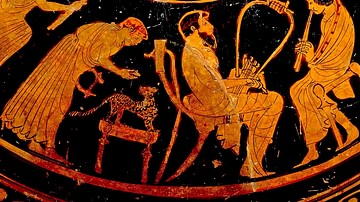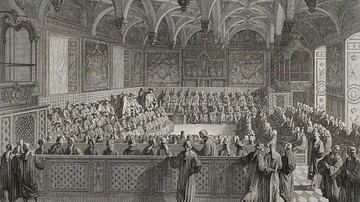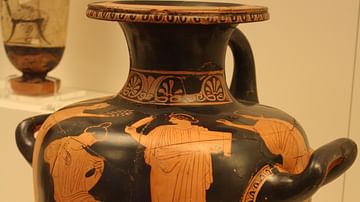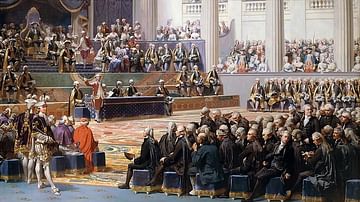Illustration
Red-figured hydria (water-jar) displaying a dance-training (gymnopaida) session. Two young girls practice dancing under the supervision of a female and a male tutor. The girls wear short tunics (chiton) and take identical steps towards each other, hands on hips, a movement reserved for solo-dancing in ancient Greece. Their heads are turned towards their tutors, who are both dressed elaborately with crowns on their heads, suggesting the high status of teachers in classical Athens. The words kale and kalos (meaning “beautiful”) is inscribed, respectively, above the heads of the girls and the male instructor, who may use his stick to tap the dance beats. The horseshoe-shaped lyre, decorated with two eyes, hung on a corner, symbolises music.
Hydriai were vessels for carrying and keeping water. They were mostly used by women. Therefore, many of them are decorated with paintings about women’s life. This hydria was made in Attica, Greece, around 425 to 450 BCE, and found in Capua, Italy. It is painted by The Phiale Painter, a prominent artist of red-figure technique.
Cite This Work
APA Style
Museum, T. T. o. T. B. (2020, October 07). Red-figured Hydria - Dance Training Session. World History Encyclopedia. Retrieved from https://www.worldhistory.org/image/12861/red-figured-hydria---dance-training-session/
Chicago Style
Museum, The Trustees of The British. "Red-figured Hydria - Dance Training Session." World History Encyclopedia. Last modified October 07, 2020. https://www.worldhistory.org/image/12861/red-figured-hydria---dance-training-session/.
MLA Style
Museum, The Trustees of The British. "Red-figured Hydria - Dance Training Session." World History Encyclopedia. World History Encyclopedia, 07 Oct 2020. Web. 14 Apr 2025.






